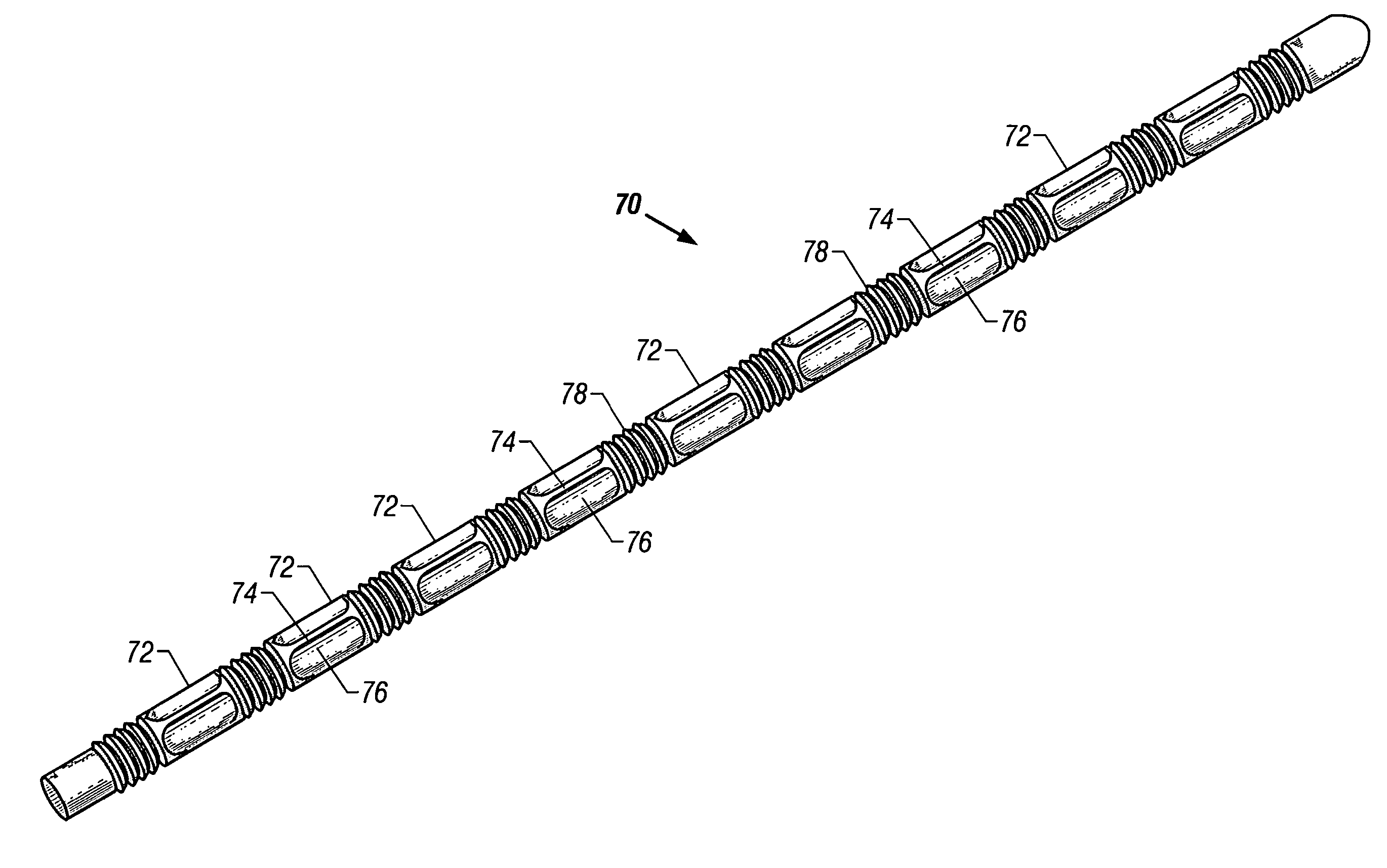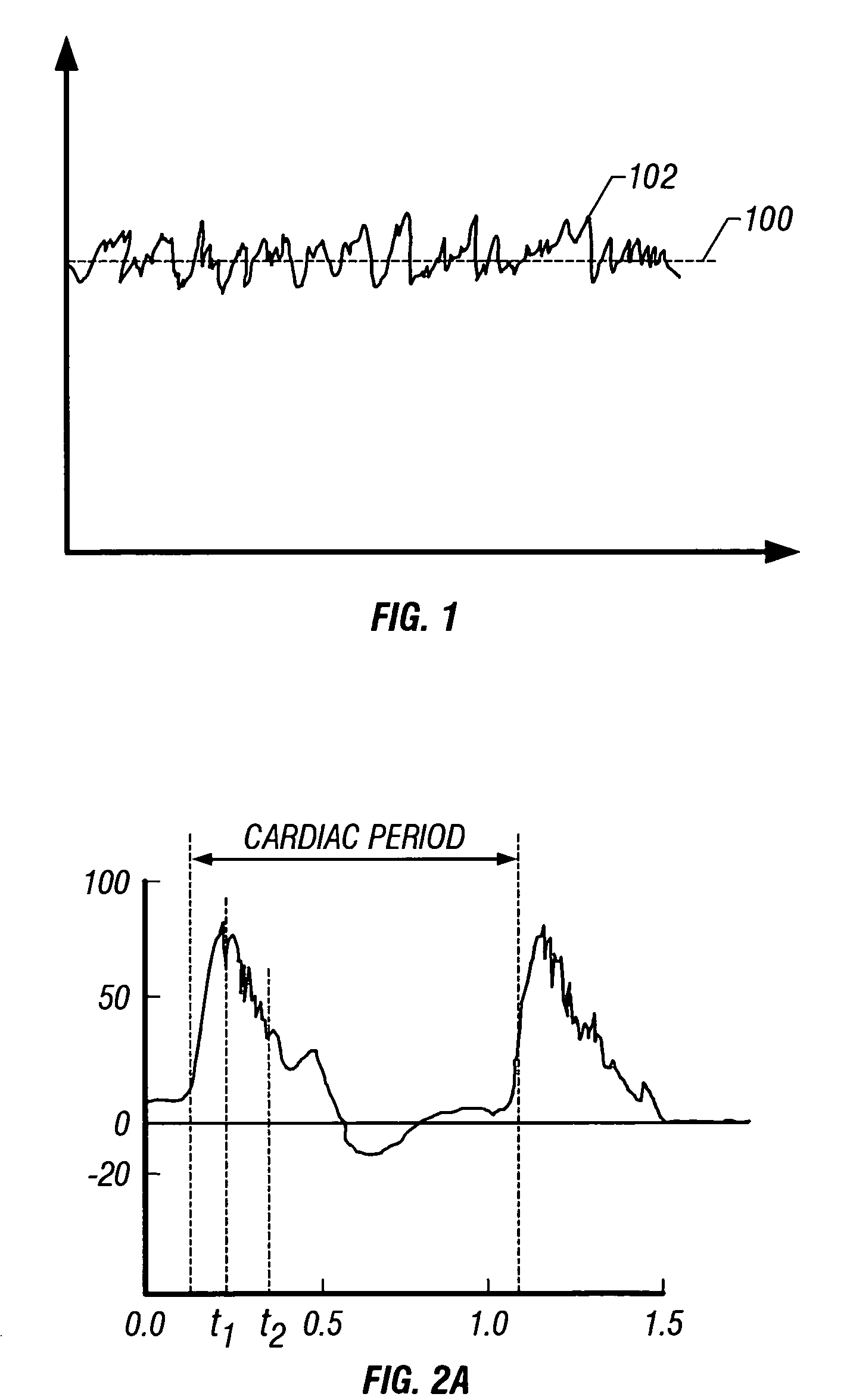Selective organ cooling apparatus and method
a technology for organs and cooling apparatuses, applied in the field of selection and control of the temperature of selected body organs, can solve the problems of low cardiac output, severe derangement of the cardiovascular system, and risk of systematic vascular effects of use of total body hypothermia, and achieve the effects of enhancing surface area, and increasing turbulence or mixing
- Summary
- Abstract
- Description
- Claims
- Application Information
AI Technical Summary
Benefits of technology
Problems solved by technology
Method used
Image
Examples
second embodiment
[0083]FIG. 8 is a cut-away perspective view of a heat transfer element 50. An external surface 52 of the heat transfer element 50 is covered with a series of axially staggered protrusions 54. The staggered nature of the outer protrusions 54 is readily seen with reference to FIG. 9 which is a transverse cross-sectional view taken at a location denoted by the line 9—9 in FIG. 8. If desired, the height, dp, of the staggered outer protrusions 54 can be greater than the thickness of the boundary layer which would develop if a smooth heat transfer element had been introduced into the blood stream. As the blood flows along the external surface 52, it collides with one of the staggered protrusions 54 and a turbulent wake flow is created behind the protrusion. As the blood divides and swirls along side of the first staggered protrusion 54, its turbulent wake encounters another staggered protrusion 54 within its path preventing the re-lamination of the flow and creating yet more turbulence. I...
third embodiment
[0090]FIG. 11 is a perspective view of a heat transfer element 70 according to the present invention. The heat transfer element 70 is comprised of a series of elongated, articulated segments or modules 72. A first elongated heat transfer segment 72 is located at the proximal end of the heat transfer element 70. The segment 72 may be a smooth right circular cylinder, as addressed in FIG. 3C, or it can incorporate a turbulence-inducing or mixing-inducing exterior surface. The turbulence-inducing or mixing-inducing exterior surface shown on the segment 72 in FIG. 11 comprises a plurality of parallel longitudinal ridges 74 with parallel longitudinal grooves 76 therebetween. One, two, three, or more parallel longitudinal ridges 74 could be used without departing from the spirit of the present invention. In the embodiment where they are used, the longitudinal ridges 74 and the longitudinal grooves 76 of the heat transfer segment 72 are aligned parallel with the axis of the first heat tran...
fourth embodiment
[0094]FIG. 12 is a perspective view of a heat transfer element 80 according to the present invention. The heat transfer element 80 is comprised of a series of elongated, articulated segments or modules 82. A first elongated heat transfer segment 82 is located at the proximal end of the heat transfer element 80. A turbulence-inducing or mixing-inducing exterior surface of the segment 82 comprises a plurality of parallel longitudinal ridges 84 with parallel longitudinal grooves 86 therebetween. One, two, three, or more parallel longitudinal ridges 84 could be used without departing from the spirit of the present invention. In this embodiment, the longitudinal ridges 84 and the longitudinal grooves 86 of the heat transfer segment 82 are aligned parallel with the axis of the first heat transfer segment 82.
[0095]The first heat transfer segment 82 is coupled to a second elongated heat transfer segment 82 by a first flexible section such as a bellows section 88, which provides flexibility ...
PUM
 Login to View More
Login to View More Abstract
Description
Claims
Application Information
 Login to View More
Login to View More - R&D
- Intellectual Property
- Life Sciences
- Materials
- Tech Scout
- Unparalleled Data Quality
- Higher Quality Content
- 60% Fewer Hallucinations
Browse by: Latest US Patents, China's latest patents, Technical Efficacy Thesaurus, Application Domain, Technology Topic, Popular Technical Reports.
© 2025 PatSnap. All rights reserved.Legal|Privacy policy|Modern Slavery Act Transparency Statement|Sitemap|About US| Contact US: help@patsnap.com



